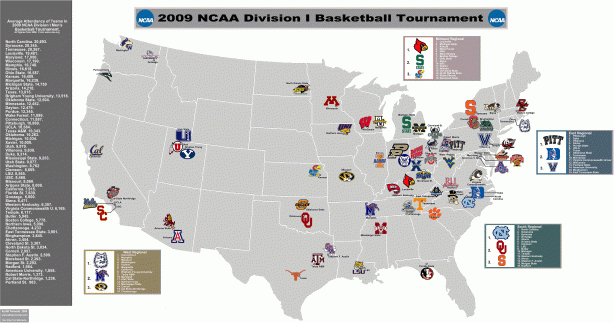I decided that in order to really talk about college sports and what they are all about, I first need to list the different conferences and divisions of each sport. Of course every school is a apart of the NCAA but, the different conferences will surely make a huge difference in the upcoming topics I have.
Acoording to Wikipedia: an athletic conference is a collection of sports teams playing competitively against each other at the professional, collegiate or high school level. In many cases conferences are subdivided into smaller and smaller divisions with the best teams competing at successively higher levels. Conferences often, but not always, include teams from a common geographic region.
Now let’s talk about the different divisions.
Division I member schools are required to sponsor a minimum of seven sports for women and seven for men (or eight for women and six for men). This must include two sports for both men and women.
Every separate college season has to be represented by each gender also. There are also scheduling, participant and contest minimums for each sport. Football Bowl Subdivision teams must meet a minimum attendance requirement of an average of 15,000 people in actual or paid attendance for each home game. DI colleges need to meet minimum scholarship awards for their athletics program, and the maximum number of scholarships for each sport is set by NCAA regulation.
Division I is home to many of the country’s biggest universities. There are many scholarship opportunities and the competition is cut-throat. This division is seen as the first step towards professional sport.
In the football recruiting process, there are some major differences between schools at the Division I-A level (BCS) and Division I-AA level (FCS). The major difference in I-A and I-AA are simply the size in school and the revenue they bring in for football. Schools at different levels offer scholarships at different times and their level of play factors in.
Division II member colleges are required to sponsor at minimum of five sports for women and five for men, (or six for women and four for men). This must include two team sports for both women and men. Each college playing season must be represented by each gender as well. There are participant and contest minimums set for each sport and scheduling criteria as well. The NCAA sets maximum financial aid awards for each sport that a Division II institution cannot exceed. Division II athletics programs are financed through the college budget like other academic departments on campus.
Division II schools tend to be smaller universities and colleges. There are no age limit at D II schools.
Division III member colleges are required to sponsor a minimum of five sports for women and five for men. There are no athletic scholarships offered by DIII institutions. Student-athletes receive no financial aid related to their athletic ability and sports departments are funded and staffed like any other department in the university. Athletics at D III level encourages participation by maximizing the number and variety of athletics opportunities that are available to students. The emphasis is on conference and regional in-season competition.
Get it? Got it? Good!
